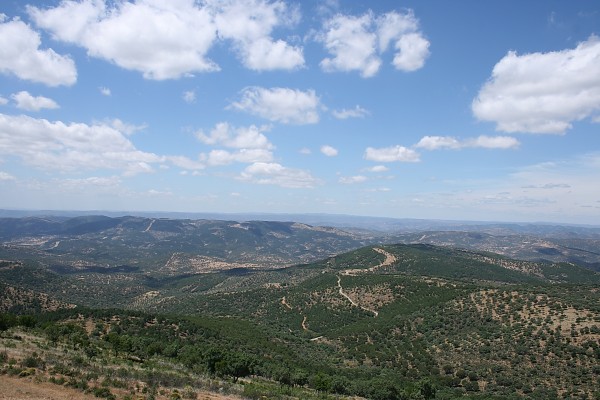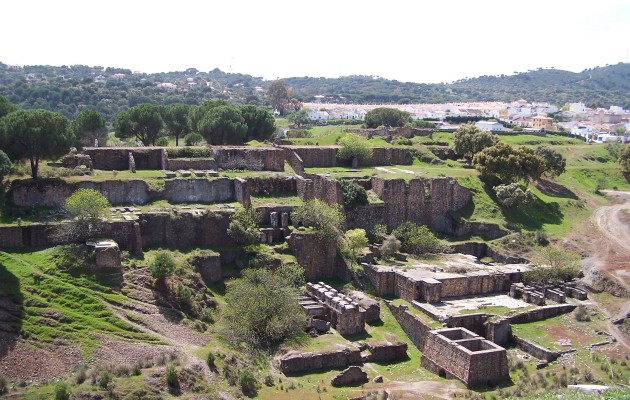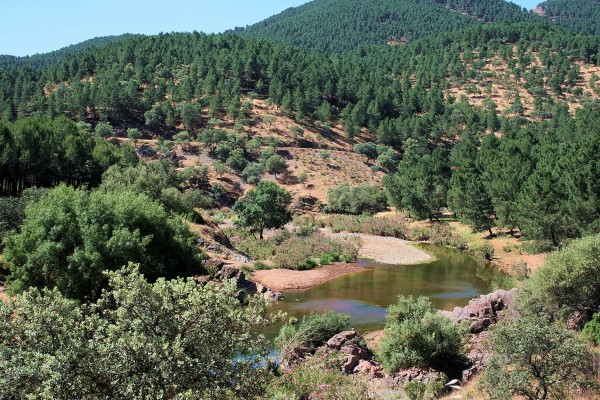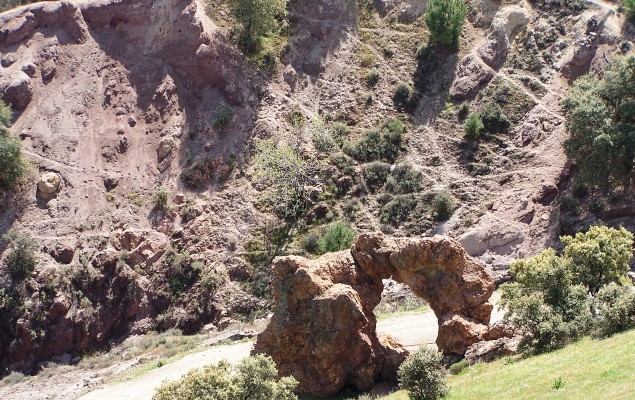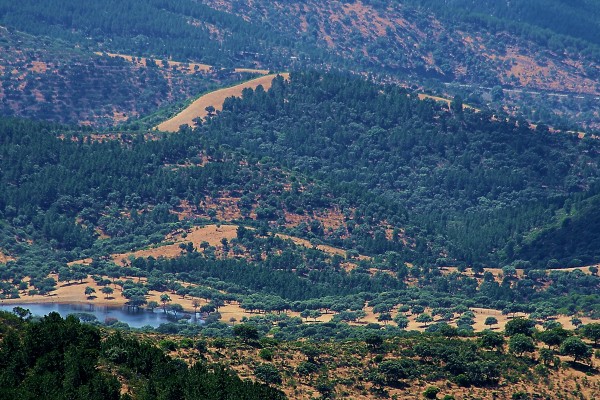The Sierra Morena Cordobesa [Cordovan Sierra Morena] region takes in portions of the Province of Córdoba’s two Nature Reserves: the Hornachuelos Nature Reserve and the Cardeña-Montoro Nature Reserve.
The Cardeña-Montoro Nature Reserve
The Cardeña-Montoro Nature Reserve, established by Law 2/89 of July 18th, is located in the easternmost point of the central region of the Province of Córdoba, covering an area of 41,212 hectares within the municipal limits of Cardeña and Montoro.
Forming part of the central section of the Sierra Morena, the Reserve presents a landscape of gentle slopes. This batholithic geomorphical formation takes the form of rounded blocks of granite, referred to as “bolas” [balls], which stand facing the beautiful valley carved out by the River Yeguas, where we find the steepest inclines in the Reserve.
Flora is composed of Mediterranean forest and thicket, pines and extensive meadows, whilst the area surrounding Venta del Charco is the only part of the province populated with Pyrenean oaks. In terms of fauna, the Reserve provides shelter to imperial eagles, golden eagles, booted eagles, short-toed eagles, griffon vultures and black vultures, along with mammals such as lynxes, wolves, otters, deers and wild boar.
Exploitation within the Reserve takes the form of cereal cultivation, focusing mainly on barley, and livestock (sheep, pigs, cattle, goats and horses). Beekeeping is another prominent activity. Moreover, craftsmanship in Montoro also bears mention, involving spinning hemp by hand and ornamental ironwork.
The Hornachuelos Nature Reserve
The Hornachuelos Nature Reserve, which was also established by Law 2/89, of July 18th, is located in the west of the Province of Córdoba, covering an area of 67,202 hectares that lie within the municipal limits of Almodóvar del Río, Hornachuelos, Posadas and Villaviciosa de Córdoba. The Reserve also takes in a small strip of the capital city.
The River Bembézar winds its way through the Reserve and its flow rate is controlled by the Bembézar reservoir and diversion dam. The River Guadiato flows through the easternmost section of the Reserve, whilst the River Retortillo flows along the western edge of the Reserve. The flow rates of both of these rivers are controlled by the Retortillo and Breña reservoirs.
In terms of flora, the ilex dominates the landscape, interspersed with cork oaks and gall oaks in areas with a greater degree of humidity, and with wild olives in the area close to the Vega del Guadalquivir [Meadowlands of the Guadalquivir].
The Reserve also contains pastures with grazing land beneath ilexes and cork oaks, particularly in low mountain areas. In addition, poplars, alders and ash trees grow next to river-banks, accompanied by ivy and hawthorns.
Fauna in the area are in an extremely healthy state of preservation The Sierra is home to the second largest colony of black vultures in Andalusia, in addition to three colonies of griffon vultures. Nesting sites of the golden eagle, Bonelli’s eagle and black stork also bear mention. Moreover, the Reserve contains 30 species of mammals, including Iberian lynxes, which are in danger of extinction, mongooses, wolves, otters, wild boar and deer.
Hunting grounds occupy the majority of the area, although livestock are also present in the form of pigs, cattle and sheep, along with traditional cork harvesting, which takes place every nine years. Apiculture is on the increase as a result of the abundance of flowers in the Reserve.
The Sierra Morena Cordobesa region takes in the following municipalities:Adamuz, Espiel, Hornachuelos, Montoro, Obejo, Villaharta, Villanueva del Rey and Villaviciosa de Córdoba.

